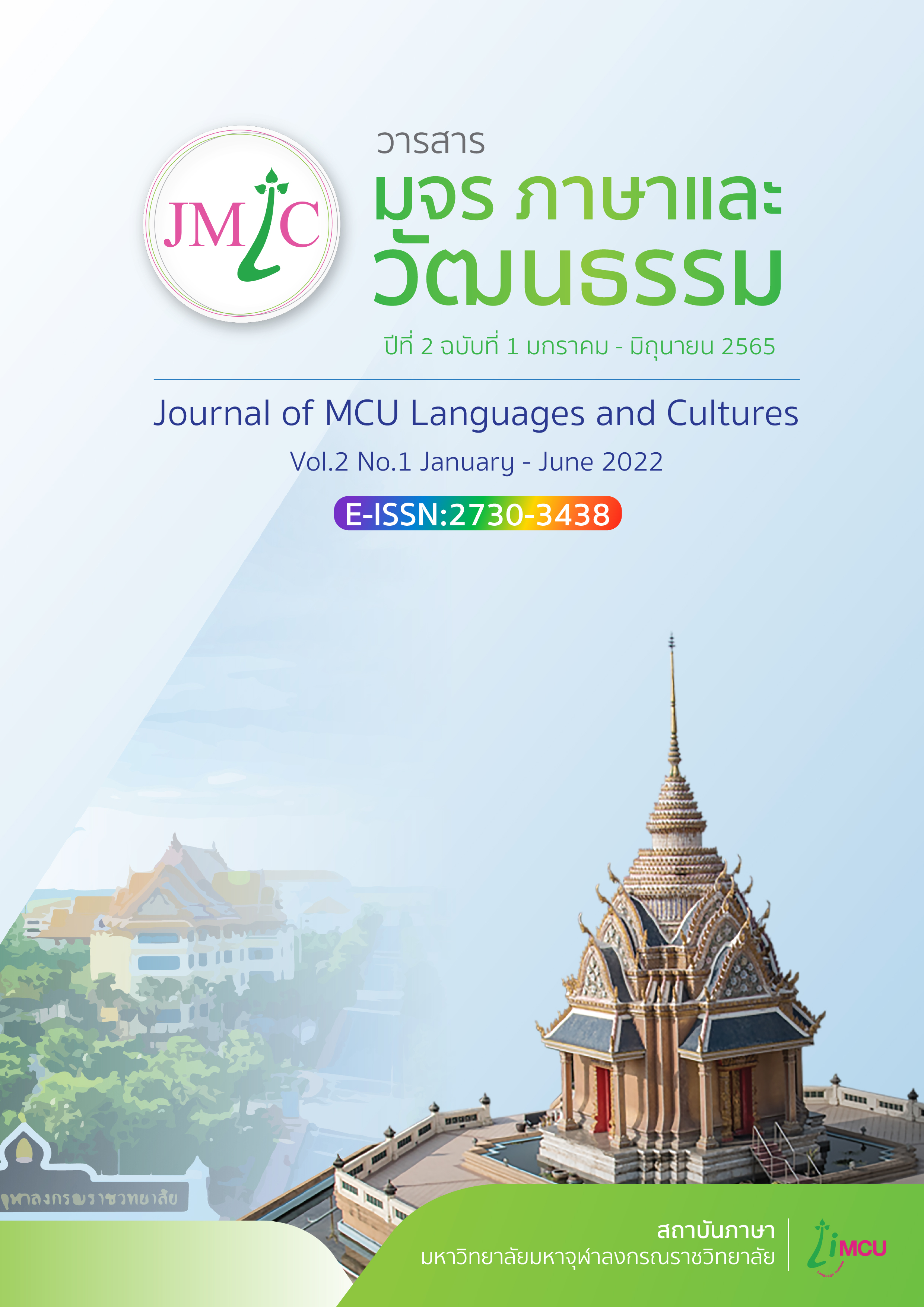The polysemy and extended meanings of water or “Nước” lexeme in the Vietnamese language
คำสำคัญ:
polysemy, Vietnamese language, prototype, nước, extended meaningsบทคัดย่อ
บทความนี้มีจุดมุ่งหมายเพื่ออธิบายพหุนนัยของน้ำหรือคำว่า ‘nước’ ในภาษาเวียดนาม ผู้เขียนเลือกคำนิยามพหุนนัยในมุมมองของนักวิชาการชาวเวียดนาม และภายใต้ทฤษฎี prototype ทั้งสองได้กล่าวถึงแนวคิดเรื่องความหมายแรกของศัพท์และความหมายที่ขยายออกไปผลการวิจัย พบว่ามี 8 ความหมายของคำว่า ‘nước’ คือ 1) ความหมายแรกหรือความหมายต้นแบบ ‘ไม่มีสี ไม่มีกลิ่น ของเหลวใส อยู่ในทะเลสาบ แม่น้ำ ทะเล’ 2) ระดับสี ความเงางาม 3) ความเร็วของม้า 4) การวัดความเร็วทั่วไป 5 ) การเดินหมากรุก 6) ประเทศ 7) วิธีดำเนินการเพื่อการ เปลี่ยนแปลง สถานการณ์ 8) ลักษณะนิสัยที่ดี พหุนนัยของ nước เกิดจากการอุปมา และคำพ้องความหมายความสำคัญของงานวิจัยนี้บ่งบอกว่ามีความสัมพันธ์ระหว่างโลกทัศน์ของมนุษย์ กับแนวคิดใน การสร้างภาษาของตนเอง
เอกสารอ้างอิง
Barbara Lewandowska-Tomaszczyk. (2007). Polysemy, prototypes, and radial
categories. The Oxford Handbook of Cognitive Linguistics. Oxford University Press.
Cruse, Alan. (2000). Meaning In Language: An Introduction to Semantics and
Pragmatics. Oxford: Oxford University Press
Evans, Vyvyan. and Melanie Green. (2006). Cognitive Linguistics: An Introduction.
Edinburgh: Edinburgh University Press.
Hoàng Phê. (2004). Từ điển tiếng Việt – Vietnamese Dictionary. Nhà xuất bản Đà Nẵng
Kovecses, Z. (2010). Metaphor: A Practical Introduction. 2nd ed. Oxford: Oxford
University Press.
Nguyen Cong Duc and Nguyen Huu Chuong. (2004). Tu Vung Tieng Viet (Vietnamese Lexical Clarification). Hochiminh National University. Hochiminh: Tu Sach Dai Hoc Khoa Hoc Xa Hoi- Nhan Van.
Pasaribu, Truly Almendo. (2014). Polysemy and Semantic Extension of Lexeme "Hot".
LLT Journal, 17 (1). pp. 11-18. ISSN
ดาวน์โหลด
เผยแพร่แล้ว
รูปแบบการอ้างอิง
ฉบับ
ประเภทบทความ
สัญญาอนุญาต
ลิขสิทธิ์ (c) 2022 วารสาร มจร ภาษาและวัฒนธรรม

อนุญาตภายใต้เงื่อนไข Creative Commons Attribution-NonCommercial-NoDerivatives 4.0 International License.






